SOLAR LISTENING UNDER A NIGHT SKY
Fireworks in the sky during the independence time.
The clear dark moon arrives later.
Venus, Saturn and Mars as a red dot.
The Skywatcher's an obsessive mirror
on a revolving platform built on non-drifting sand dunes.
maintained by constant wind
leftover from the Bonneville Flood
some 15,000 years ago.
Look down, look up.
Before the geologist and the astronomer,
what would Walt Whitman say to this—
exploding white dwarfs,
the lives and deaths of massive stars.
●
Irwin Horowitz, the astronomer, explains about the two types of supernovae: Type I with no hydrogen absorption, and accompanying light curves; and Type II, classic exploding stars with hydrogen. "Type I gets so big it explodes and obliterates itself. A big hydrogen bomb, Type II collapses under its own core under gravity."
He poor/He rich—the unexplained scientific code language on his overhead chart. We're all searching through the same story line, doing the same work.
"The life of a star is a balance between pressure and gravity. The pressure tries to blast the star apart and the gravity attempts to crush the star inward. The pressure grows as you go toward the center of a star, much like an onion. The struggle is for balance."
As one travels inward, the hotter the gas. The massive star consumes its fuel faster and faster to obtain higher temperatures. Our sun is a bit odd in that it has no companion, no white dwarf in accompaniment. Too small to be a supernovae. A giant nuclear reactor, fusing hydrogen, producing helium and energy.
●
We leave Yakima at 7 am listening to the voice of young June Carter Cash, clear calling and yearning from the person who would find her soulmate in Johnny Cash. June Carter Cash, a scrapbooker, memory collector, from deep country gospel roots, dancing on a pony keg, fevered, going to Jackson. The music will switch to Cajun BeauSoleil, warming us towards deeper hope and intimacy. Karen loves the fiddle. She laughs at my French.
Prelez-nous a Boire. Speak to us of drinking. Tous les doux pour la meme. For the same girl. J'ai ete au Zydeco. I went to the Zydeco.
Boys from small towns. Apprenticed to become North Dakota slow talkers.
We will turn off I-84 at Mountain Home, Idaho, listening to Garrison Keillor's Prairie Home Companion, coming from Chicago, and Keillor's clearly off-balance from the songline image of John Prine's "...you've broken the speed of the sound of loneliness." Prine is Keillor's special guest. "How did you do that?" Keillor asks Prine, and Prine, a throat-cancer survivor, voice cracking, laughs. Prine sings, "Grandpa was a carpenter..." and Keillor asks him about his grandpa, his carpenter skills. "He would build a house and move on. Grandpa was a Lincoln Republican." Lincoln still very much alive. "He kicked my dad out of the house for voting for FDR." "And chainsmoked Camel cigarettes?" One can imagine Keillor looking into Prine's shirt pocket. Prine laughs again. "Well, I sang that song at a family reunion, and my cousin pulled me aside afterwards, and said, 'Johnny, he smoked Kools. Grandpa smoked Kools.' But that was a one-syllable cigarette and I needed a two-syllable word."
Prine carried the mail in Chicago. He's one of us. The radio cracks and we lose contact as we drive into Bruneau Dunes State Park.
●
Karen has this trip planned to roughly 400 miles a day. We want to be in an area without a spot. Without a fixed destination. This is the tension that creates us. A spot to look around in and maybe something will happen. A spot that is not a spot.
Karen's the lead story. Our story walks in solidarity with the past. We step aside for memories to surface. The seminal journey of our young marriage came in 1979 when we followed this road with our young family, coming back to Indiana to get that children's rocking chair saved for Karen (but she had to come back to Indiana to get it), to find and take the peonies from Karen's mother's grave, Dorothy, Karen's mother, gone at one, to claim the narrative of Karen's story. Our three children—Tim, 8; and the twins, Krista and Leah, 5. Karen and I were 34 years old.
●
"Big stars need to maintain their luminosities," the astronomer tells us. He talks of time in a way that would take the breath from geologists. Short time. Long time. "Short, spectacular light consuming fuel at massive rates."
And temperatures. Our daughter calls to tell us of her child's fever. "She has a temp of 102.6." The astronomer says, "One billion degrees Kelvin."
"You can't get any more energy from iron," he says. "Fusion releases energy. Iron is the end point of the star."
John Coltrane, energy before fusion. Coltrane, the birth story. Music before music. What was music after Coltrane? Must we forget him in order to hang on to the thread of sound?
"How does inward core collapse lead to outward explosion? The outer core lags behind the inner core."
●
Karen and I walk to the observatory through a trail of sand. Only red flashlights allowed tonight. We didn't know we were coming. No red flashlights in my backpack. Karen will figure out these telescopes, and how to look through them. I want to walk that lonesome sand dune at dusk before the presentation. Neither of us have thought about bugs or mosquitoes, and that means we'll both be back in the mothership by nightfall. Karen will stay, and I'll put on spray and long sleeves, try to figure out how I'll walk the sand trail by starlight. Even at midnight the moon will not have arrived.
●
"How the universe works—supernovae creates it all. We're all made from dying stars. We are literally star dust. The heavier the star, the faster it burns. Live fast to die young. Building blocks of the universe, trapped and they need to get out. Iron eats the energy of nuclear fusion."
Language massages the soul as it makes its assault. Short clips interspersed from the Discovery Channel's Nova animates the presentation, gives me the odd detail to hang on to in space and time. I'll take some of my questions to the Internet, logging on to a student site suggested for 14 years and up. The astronomers can't contain themselves for joy. I'm certain that I've just heard that the star dust in my left hand might have come from a different star than the stardust in my right hand, but language is on the move, a migration that can't be understood or legislated. Thanking the stars for my left hand, I ask, But which one?
Life in space with no transitions.
Chinese astronomers observe the Crab Nebula in 1054 A.D. Western observers aren't looking at the sky, don't see it. This detail is important to our story, making it necessary to rewrite the textbooks. Make a note and look for it later. Catch the fragments that will give your own dreamstory some air. Explosions are perfect markers. Pay attention to the sky. What the Chinese astronomers saw in 1054 is still news. That, my friends, is poetic theory.
Neutrinos hold the answer for the missing energy.
Early computer models couldn't make the stars blow up. What was missing? Where was the missing energy? Neutrinos. But how to prove that supernovaes produce neutrinos? Neutrinos are the smoking gun in the room. Finally we saw it: SN2008D (09 Jan 2008), a star in the process of blowing up.
Prove that supernovaes produce neutrinos. Remember those Chinese.
Dark energy is discovered in 1998. Here comes the shadow. 14 billion years ago the big bang. Still expanding. Galaxies flying away from us. Explosions are perfect markers. In 1998 we get the big surprise of dark energy, but we don't know what it is. It is this, though—every textbook is wrong and will need to be rewritten. The dark energy can't be seen, touched or detected, but it says that the universe is speeding up, not slowing down. It's the number one problem in physics right now.
We call it dark energy because we don't know what it is.
Poets have the same problem.
●
Walking the sand trail through sage under starlight on the way back to the mothership with no red light, I'm dizzy, and force myself to pay attention. Don't walk off. Don't twist an ankle. Stay in sand. It's a slow, wonderful half-mile. I don't stay to look through the telescope. Our park volunteer reminded us, "Don't be afraid to tell us if you don't see anything. Sometimes we move the scope. And you've been waiting in line for 30 minutes." I walk back by sand feel, alone. I arrive back at camp to find that Karen has left the porch light on for me and a swarming mass of over-sized mosquitoes have gathered to greet me uner the light. This is serious enough me make me question the practicality of attempting entry. What to do? What a night.
●
On the way out of the dunes campground, I stop to cut sage in full summer flower, in all of its musky headiness. I think first of the young volunteer at the telescope in the Ole Miss sweatshirt. A lawyer in the air force. His folks have a place on the beach in Alabama. He shares their disaster narrative with me. "BP shut down the beaches. The government shut down the drilling." He tells me to go eat with the people, and listen. And last night, unable to sleep, killing mosquitoes that gained entry with me, secret knowledge accessible to all, buzzing my head.
Karen reads to me from an interview with a Wyoming geologist as we drive. I go in and out of all of it, eyes skimming the road, sweeping the field.
Look down. Look up.
Crossing fossil fields on the highway.
Countless millions of tiny critters
give their lives
so their transformed bodies
can be changed into oil
to fuel my rich life.
Rock Springs and Green River.
Fossil Butte and night sky.
Fossil Fish Karen says aloud, reading.
Fossilfish. Fossil Fish.
Several times. Gift from Karen.
How I hear it both ways
at the same time.
Gift from sea world.
Fossil Fish.
It's against the law
to pick up fossils on federal land,
Charlie Love says, but it's hard
to walk 100 yards from your car
in SW Wyoming and not be able
to find fossils of some kind.
"There are places you can
quarry fossil fish all day
and keep them." Fossil fish.
"It's a great deal of fun
cracking open a piece of shale
and finding the imprint
of a fish 100 million years old."
Jim Bodeen
3 July 2010- 6 July 2010

●




















































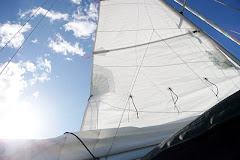

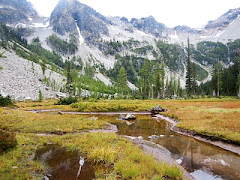


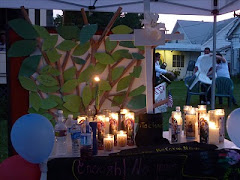






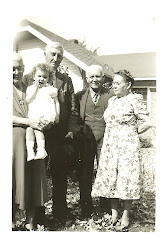









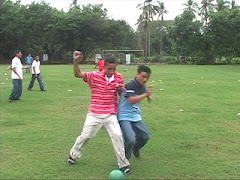
No comments:
Post a Comment